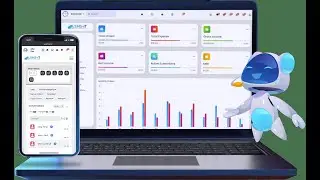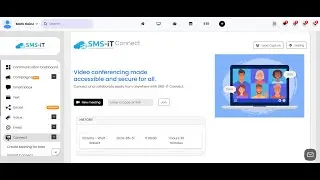Automating lead generation with SMS-iT CRM workflows
Introduction
In today’s fast-paced business environment, lead generation automation has become a crucial component of successful marketing strategies. “SMS-iT” CRM workflows provide a comprehensive solution for automating lead generation processes, enabling businesses to streamline operations and maximize efficiency. This article explores “SMS-iT” CRM workflows for lead generation automation, discussing their benefits, setup processes, SMS campaign creation, integration with other tools, campaign success analysis, best practices, common mistakes, advanced optimization features, and future trends.
Key Takeaways
1. “SMS-iT” CRM workflows automate lead generation processes for businesses.
2. Benefits include increased efficiency, higher conversion rates, and significant cost savings.
3. Setting up workflows involves creating triggers and defining actions.
4. Effective SMS campaigns require personalized messaging and clear calls to action.
5. Integrating workflows with other lead generation tools enhances campaign impact.
Understanding the Benefits
Increased Efficiency and Productivity
“SMS-iT” CRM workflows automate repetitive tasks, freeing up valuable time for sales teams to focus on more strategic activities. Automated workflows ensure seamless lead nurturing through the sales funnel, improving lead quality and conversion rates. Automation also reduces the risk of human error and ensures consistent follow-up with leads.
Cost Savings and ROI
Automating lead generation processes reduces the need for manual labor, allowing businesses to allocate resources more effectively. This not only saves money but also enables scalability without proportional cost increases. Automation also enhances customer experience by delivering personalized and timely communications, improving satisfaction and conversion likelihood.
Setting Up “SMS-iT” CRM Workflows
Identifying Key Stages and Mapping Workflows
The first step in setting up “SMS-iT” CRM workflows is to identify key stages in the lead generation process and map out the desired workflow. This involves defining triggers that initiate actions, such as sending SMS messages or assigning tasks to sales representatives.
Creating and Configuring Automation Rules
Using the “SMS-iT” CRM platform, businesses can create and configure automation rules. This involves setting up conditions and actions based on specific criteria, such as lead source, lead score, or engagement level. Messaging and timing of SMS communications can be customized to align with brand and audience.
Integration with Existing CRM Systems
Seamless integration with existing CRM systems allows businesses to leverage their customer data and streamline lead generation processes. This ensures synchronization of relevant information between systems, providing a holistic view of leads and enabling more effective communication and follow-up.
Creating Effective SMS Campaigns
Personalization and Segmentation
Effective SMS campaigns require personalization and segmentation strategies. Messages should be relevant and tailored to each recipient, addressing them by name, referencing their specific interests or previous interactions, and sending targeted offers or promotions.
Optimizing Call-to-Actions (CTAs)
Optimizing the call-to-action in SMS messages is essential for driving conversions. CTAs should be clear, concise, and compelling, prompting recipients to take the desired action. Experimenting with different CTAs and tracking their performance helps identify the most effective ones.
A/B Testing
A/B testing involves creating multiple versions of a message and testing them against each other to identify which elements resonate best with the audience. This iterative approach allows for continuous improvement and better results over time.
Integrating with Other Lead Generation Tools
Email Marketing Platforms
Integration with email marketing platforms ensures consistent messaging across channels, maximizing reach and engagement. Synchronizing email and SMS campaigns helps maintain a cohesive communication strategy.
Social Media Advertising Platforms
Integrating social media advertising platforms captures leads from social media campaigns and automatically adds them to SMS workflows for further nurturing. This enhances the effectiveness of multi-channel marketing efforts.
Landing Page Builders
Connecting landing page builders to SMS workflows allows businesses to capture leads directly from landing pages and trigger automated follow-up actions, streamlining the lead capture process.
CRM Systems
Integration with CRM systems enables seamless transfer of leads and synchronization of customer data. This holistic approach ensures all relevant information is available in one place, facilitating effective lead management and communication.
Analyzing Campaign Success
Tracking Key Metrics



















